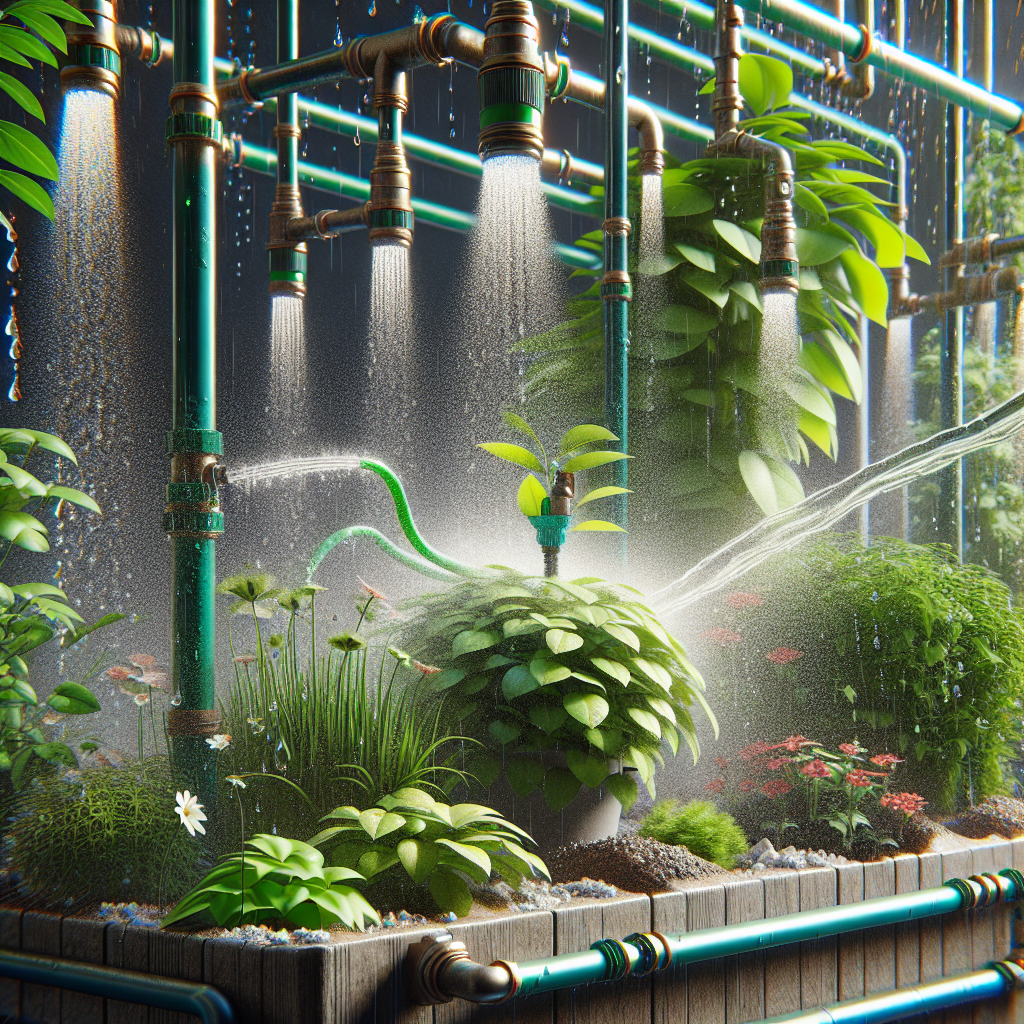Efficient Watering for Container Gardens: Slow Drip Irrigation Systems
Container gardening is a popular and practical solution for those who lack space or have limited access to traditional garden plots. Whether you are growing flowers, herbs, or vegetables in pots, efficient watering is crucial for the health and vitality of your plants. One of the most effective methods for delivering water to container gardens is through slow drip irrigation systems. In this article, we will explore the benefits of slow drip irrigation and how to implement it in your own container garden.
What is Slow Drip Irrigation?
Drip irrigation is a technique that allows water to slowly and directly reach the roots of plants through a network of tubing and emitters. Unlike traditional sprinkler systems, which can waste water through evaporation and overspray, slow drip irrigation systems deliver water directly where it is needed most – at the plant’s roots.
The concept behind this method is simple yet effective. By providing a constant, slow flow of water near the root zone, plants can absorb moisture more efficiently while avoiding excessive runoff or evaporation. This not only ensures optimal hydration but also reduces weed growth and minimizes disease problems caused by wet foliage.
Benefits of Slow Drip Irrigation for Container Gardens
1. Water Efficiency: Slow drip irrigation systems are highly efficient in delivering water directly to the root zone without wastage. This targeted approach significantly reduces water loss due to evaporation or runoff commonly associated with traditional watering methods. By using less water overall, you not only conserve this precious resource but also reduce your utility bills.
2. Consistent Moisture Levels: Containers can quickly dry out due to their limited soil volume and exposure to sunlight and wind. Slow drip irrigation systems maintain consistent moisture levels within containers by slowly releasing water over an extended period. This ensures that plants have access to moisture whenever they need it, preventing under- or over-watering issues.
3. Time-Saving: Watering each container individually can be a time-consuming task, especially if you have a large container garden. Slow drip irrigation systems allow you to automate the watering process, freeing up your valuable time for other gardening tasks or leisure activities. You can set a timer or use a smart irrigation controller to determine the frequency and duration of watering, providing convenience and flexibility.
4. Enhanced Plant Health: Consistent moisture levels provided by slow drip irrigation systems promote healthier plants. When water is consistently available at the root level, plants can absorb nutrients more efficiently and develop stronger root systems. This leads to improved plant growth, increased resistance to diseases and pests, and ultimately better yields for edible crops.
Implementing Slow Drip Irrigation in Your Container Garden
Now that we understand the benefits of slow drip irrigation, let’s discuss how you can implement this system in your container garden.
1. Choose the Right Equipment: To set up a slow drip irrigation system, you will need a few key components. These include tubing (preferably UV-resistant), connectors, emitters or drippers, and a pressure regulator if your water source has high pressure. Drippers are available in various flow rates; choose one appropriate for your plants’ water needs.
2. Measure and Plan: Before installing the system, measure the dimensions of your container garden to determine how much tubing will be required. Consider the spacing between plants and plan your layout accordingly. The goal is to ensure that each plant receives adequate water without excessive overlap.
3. Install the System: Start by attaching the tubing to your faucet or water source using appropriate connectors. Lay out the tubing around your containers, securing it with stakes or clips as needed. Place emitters near each plant’s base according to their watering requirements and flow rates.
4. Test and Monitor: Once installed, run water through the system to check for any leaks or clogs. Adjust the flow rate of individual emitters as necessary. Regularly monitor your plants’ moisture levels to ensure they are receiving the right amount of water. Factors such as weather conditions and plant growth may require occasional adjustments to your watering schedule.
Conclusion
Efficient watering is essential for the success of container gardens, and slow drip irrigation systems offer an effective and water-saving solution. By delivering water directly to the root zone, these systems ensure optimal hydration for plants while minimizing waste due to evaporation or runoff. Installing a slow drip irrigation system in your container garden can provide consistent moisture levels, save you time, promote plant health, and contribute to environmental sustainability. So, invest in this innovative watering method and watch your container garden thrive!














